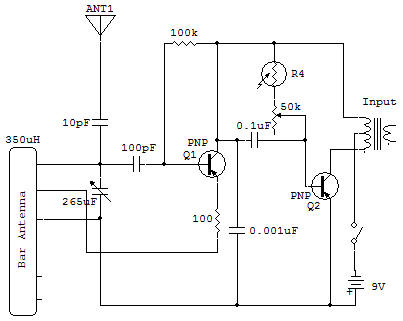
Solar Telemetry

This project demonstrates how the amount of light intensity at a far distant point (such as on a space probe or satellite) can be transmitted back to earth by telemetry.
A telemeter is a special transmitter which is used to transmit some measurable phenomenon from a distance above the earth. These are used to record and transmit data on pressure, temperature, radiation of all kinds, etc. This telemeter uses a single-stage RF transmitter which is modulated in amplitude (AM) by an audio oscillator which is controlled in frequency by the amount of light striking the CdS Cell.
A nearby AM transistor radio is used to receive the modulation (telemetry signal) by tuning it to the frequency of the transmitter. The audio-oscillator is the pulse type. The repetition rate (frequency) of the pulses is control led by the resistance in the feedback circuit.
Low resistances discharge the 0.1 uF Capacitor faster, so that frequency is higher than with high resistances. Basic operation of this pulse type oscillator is explained in detail in other projects.
The RF oscillator part of this transmitter uses the 2SA(1) Transistor in a straight forward circuit configuration.
The 100 ohm Resistor in the emitter is included to help reduce distortion of the RF sine wave signal.
The short antenna (green wire) included may be used to obtain a greater transmitter range.
Put the power ON when the transmitter is ready to use. To measure total Battery current you may use a VOM across the Switch terminals when the Switch is OFF. This method of measuring Battery current is a standard troubleshooting technique.
